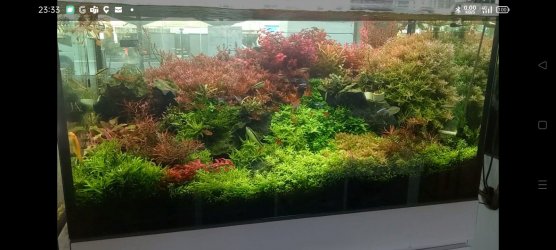Do you have a rough suggestion for how many adult pygmies this tank can support? I had thought about 12, but it's easily handling this 23 or so right now, only needing a WC once a week - it could go fortnightly or more without nitrates rising above 20ppm, but I've never tried leaving it longer. Obviously the cories like to be in as large a group as possible. Should I be guided by how stable the tank remains and how crowded it looks? I don't think I'd want more than 22 or so in there (not counting fry/small babies), but since it's working still at this stocking level (and I'm on top of plants/filtration/water changes 1-2 times a week), would I be overstocking it?
That would be a stocking level of;
8 guppies
3 otocinclus
22 adult pygmies plus fry and sub-adults until old enough to rehome.
In a 'normal' 60 litre/15.5 g, I'd consider that well-stocked, but perhaps a tad overstocked?
I assume the tank dimensions are 24 inches (60 cm) length, and 12 inches (30 cm) width, i.e., a standard 15 gallon.
You have no issues with the cories. I acquired six several years back, and after their time in the QT I couldn't decide on which tank to put them in, and I had new fish expected for the QT. So I put them in the 10g that had been running for a few years, but at the time had no fish. In a few months, eggs appeared, not a lot, but here and there. Then fry appeared. This went on for a few months, and one day I counted 32 cories, they were all together motionless mid-water and I was able to accurately count them. When I moved two years ago, I decided to put the seven grown "fry" that were left in the 29g "blackwater" tank I set up at that time. There have been obvious signs of pre-spawning behaviour (males crowded around a chunky female), but so far no eggs/fry. But given the other fish in this tank, I don't expect any eggs to survive predation.
So you have lots of space. With the guppies and otos, likely not many eggs will escape, if that is a hope.




 and pygmys a close second place, the only reason I prefer habrosus is that they display more natural cory behaviors when in a good sized group than the pygmys, also habosus are cuter imho
and pygmys a close second place, the only reason I prefer habrosus is that they display more natural cory behaviors when in a good sized group than the pygmys, also habosus are cuter imho 


